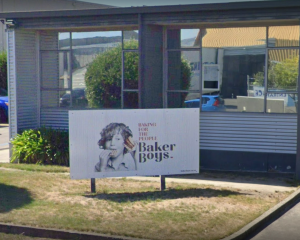
Moreover, the "families package" of higher tax thresholds and adjustments to Working for Families, accommodation supplements and other assistance amounts to a big dollar number. Mr Joyce pointed to more to come — dependent, he added in his press conference, on September 23.
That is election day. Mr Joyce has left less space for Labour, the Greens and New Zealand First.
And by not lifting the $70,000 top income tax thresholds, he has limited the well-off to the gains from lifting the two lower thresholds. Most will vote National, anyway.
Shades of Sir Lynton Crosby, the Australian master-election-manipulator and adviser to past National election campaigns.
Cynical? If this was Bill English’s Budget — which it is to some extent as architect of the previous eight and now Mr Joyce’s Cabinet chairman — the families package could be attributed in part to his Catholic social conscience.
And it is real money for some of the neediest people and their children.
Mr Joyce billed the package as a "growth dividend", affordable as a result of careful fiscal management to get net government debt down. But the dividend is partly offset by the impact of no adjustments since 2010 and that dynamic is in play for the future.
Overall government spending is projected to rise an average of 3.6% a year through to 2020-21. Take off average inflation of 2% a year and real per capita spending will fall if population growth exceeds 1.6% a year. (It has been a little over 2% over the past year, given high net immigration, which the Treasury projects to fall sharply).
A Victoria University-Institute of Economic Research analysis, using Statistics New Zealand projections of inflation and Treasury population projections, estimates overall core government spending per capita to rise an average of 0.1% a year in the four fiscal years to 2020-21.
And health spending, dominated by squeezed district health boards, is projected to flatten in dollar terms after this coming year — a substantial fall as a percentage of GDP and worse if population and health inflation are taken into account.
There is some good news in health: a "contingency fund" for new initiatives in seriously under-resourced mental health services. A group of public service bosses has begun meeting to try to work out what to do.
There is good news in infrastructure, though much of that impetus was in last year’s Budget.
And there is good news for news at a time when for-profit media are doing it tough.
Radio New Zealand gets $11.4 million over four years to upgrade its technology and "capability", because it "provides a high-quality, responsive service" — this from a party which has long denigrated Radio New Zealand’s journalism.
All this is in a rosy economy, the Treasury says, which will deliver average real per capita GDP growth of 1.3% over the next four years. Such clover-level growth would be a step up from the December 2016 quarter, when that number went backwards.
- Colin James is a leading social and political commentator.












